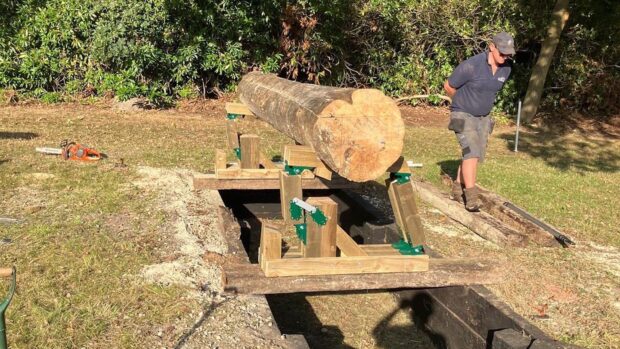Riders must take responsibility for their own safety by learning to minimise the risk of serious injury in the event of a fall, John Thelwall believes.
The former jockey, showjumper and four-star event rider says the fact falls happen and risk is inherent in equestrian competition is part of what makes it a sport, and that falls will occur despite the great strides made in improving horse and rider safety.
“So it is every rider’s responsibility to minimise the risk as a result of a fall,” he said.
John, who now concentrates on coaching and has trained riders to championship level, told H&H the issue of rider safety is “always in my mind”.
“I don’t think there are any more falls now than there used to be; if you look at falls as a percentage of competitors, the number has probably gone down,” he said.
“I feel like the grounding we had as kids – mucking about like we did – not many people are fortunate enough to have that now, and a lot of competitors are very unaware of what they should be doing in a moment of crisis – or many aren’t even aware there’s an impending crisis.
“So they’re coming to a fence thinking everything’s hunky-dory, still up the neck, and the next thing they’re underneath [the horse], which isn’t good.”
John emphasised the importance of riders’ learning to tuck their chins into their chests in the event of a fall.
“If your chin’s into your chest, you minimise the chances of breaking your neck,” he said. “Most of the time if someone does break their neck in a fall, it’s because they face-plant, and their body goes over the top of their head.
“If you tuck your chin in, that action initiates curling up, to help protect your vital organs, so you won’t face-plant, you should just roll.”
John says riders must have the chin-tucking reaction “ingrained” so it becomes automatic in the event of a fall.
He also advised riders to keep their bodyweight back as far as possible before or straight after take-off, as this will “allow the rider to remain strong and in balance until the moment when he/she needs to bail out and curl up”.
“It will also assist the horse in his attempts to save himself by avoiding putting any weight on his forehand, and encouraging him to keep his back end down as much as possible,” he said. “To do this the rider must give the horse the freedom of his head and neck by allowing the reins to slip through the fingers just after take-off — this is not a moment to be softening the contact in front of the fence, it is, rather, a moment for the rider to give the horse all the support he/she can.”
John also stressed that riders should not look up while coming into a fence, despite some traditional teaching.
Continues below…

Health and safety ‘one of the biggest threats to good riding’, expert believes
‘The independent seat and balance is so important so the hand at the end of the reins can be the

The diary of the home-made livery yard: the bad and the ugly in the horse industry
Katy addresses the horse world with some words of advice to those who are quick to judge

Subscribe to Horse & Hound magazine today – and enjoy unlimited website access all year round
“I hear all the time that people should look at the top of the trees, but the best riders all look at the jumps,” he said. “From that head-up position, to get into the curl takes a fraction of a second longer, which could make the difference between walking away and needing a stretcher.
“But also, you need the horse to back up to a fence, to get his back end forward and front end up, while if you look up and get your chest forward and head up, the horse will do the same, then he’ll lengthen, and you could end up taking [the fence] out neck-high.”
John shared the message on his social media as “we’ve all lost friends; I don’t want to lose any more”.
Have you done fall training? Do you think it’s beneficial? Write to hhletters@ti-media.com for a chance to see your views in H&H magazine and win a bottle of Champagne Taittinger (please include your name and address; letters may be edited).
For all the latest news analysis, competition reports, interviews, features and much more, don’t miss Horse & Hound magazine, on sale every Thursday.





